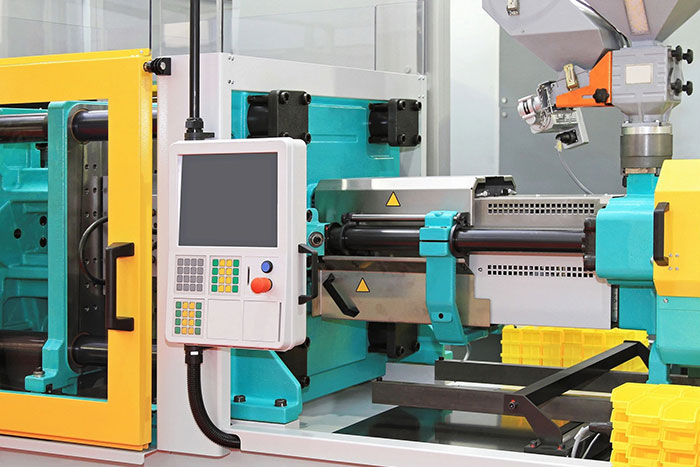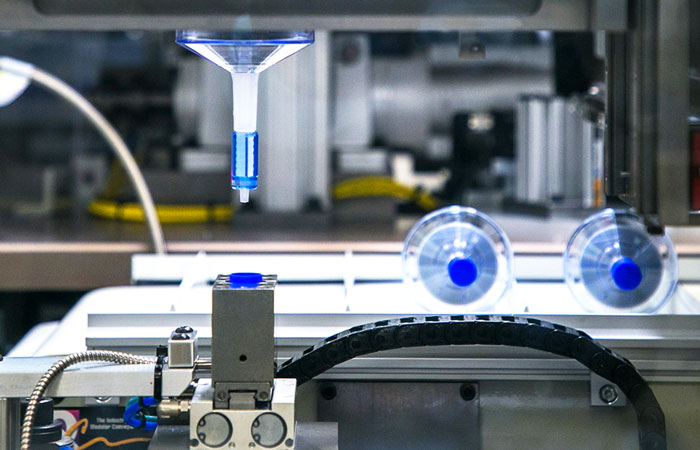Exactly How Plastic Injection Molding Drives Efficiency in Mass Production
Understanding the Basics of Plastic Injection Molding Processes
Plastic shot molding acts as a keystone of modern manufacturing, supplying a systematic approach to creating intricate parts with precision. This process not only includes the basic actions of melting and injecting materials into molds however likewise entails a nuanced understanding of numerous affecting factors, such as temperature and stress. As industries progressively require performance and top quality, the intricacies of this methodology become much more important. Discovering these crucial aspects could reveal how even minor adjustments can lead to significant improvements in production outcomes, elevating inquiries concerning the possibility for advancement in this well established process.
What Is Plastic Injection Molding?
Plastic injection molding is an extensively used production process that changes thermoplastic and thermosetting products right into specific and complicated forms. This technique is preferred for its ability to create high quantities of identical get rid of remarkable precision, making it an important approach in various markets, including vehicle, durable goods, and clinical tools.
The process involves thawing the picked plastic product and injecting it into a mold and mildew under high pressure. The mold and mildew, developed to the specs of the preferred part, enables the liquified plastic to materialize as it cools and solidifies. As soon as the product has hardened, the mold is opened up, and the ended up component is ejected.
Plastic injection molding provides several advantages, consisting of lowered waste, consistency in production, and the capability to incorporate complex styles that might be testing with various other making approaches. In addition, it supports a wide series of products, each supplying one-of-a-kind residential properties that can be customized for details applications. As sectors remain to introduce, plastic shot molding stays at the leading edge, allowing the advancement of sophisticated products that meet evolving customer needs.
The Injection Molding Refine
The shot molding procedure is an innovative method that involves several key stages to create high-grade plastic elements. Plastic pellets are fed into a warmed barrel where they are thawed into a thick fluid. This molten plastic is then infused under high stress into a precision-engineered mold and mildew, which forms the material right into the wanted type.
Once the mold and mildew is filled up, the plastic is allowed to cool down and strengthen, taking the shape of the mold and mildew dental caries. Cooling time is essential, as it affects the cycle time and the last properties of the molded part. After enough cooling, the mold and mildew opens up, and the finished element is ejected making use of ejector pins.

Materials Used in Injection Molding
Numerous materials can be utilized in the shot molding procedure, each offering distinct residential or commercial properties that provide to particular applications. The most frequently used materials include thermoplastics, thermosetting plastics, and elastomers.

Thermosetting plastics, like epoxy and phenolic resins, undergo a chemical change throughout the healing process, resulting in a rigid, inflexible framework. These materials are ideal for applications needing high heat resistance and structural honesty, commonly used in automotive components and electric insulators.
Elastomers, consisting of silicone and rubber-based materials, provide adaptability and strength. Their distinct residential properties make them suitable for applications that require flexibility, such as seals and gaskets.
In addition, specialized products like bio-based plastics and composites are getting grip for their ecological benefits and enhanced efficiency features, widening the extent of shot molding applications in various markets. Comprehending the homes of these products is important for selecting the proper type for specific projects.
Benefits of Shot Molding
Shot molding stands out as a highly effective manufacturing procedure that supplies various benefits for generating intricate parts with precision. Among the most significant advantages is the ability to create detailed styles that would be difficult or challenging to achieve with other techniques (Plastic Injection Molding). The process permits limited resistances and detailed features, ensuring high-quality components
Additionally, shot try these out molding is understood for its quick production capabilities, making it an excellent choice for high-volume manufacturing. When the mold and mildew is produced, parts can be produced promptly, minimizing lead times and increasing overall productivity. This efficiency not only decreases production prices however additionally gives an one-upmanship in the marketplace.
The versatility of materials used in shot molding further boosts its charm. A large range of thermoplastics and thermosetting polymers can be utilized, permitting makers to choose materials that ideal meet their details requirements, consisting of stamina, warmth, and flexibility resistance.
Additionally, the procedure find out here minimizes waste, as excess material can commonly be reused and reused. This sustainability element adds to a reduced environmental effect, making shot molding a liable production choice. In general, the benefits of injection molding make it a recommended method for numerous markets.
Variables Influencing Product Quality
While various elements can affect item top quality in shot molding, recognizing these elements is essential for accomplishing ideal outcomes. Trick elements consist of product choice, processing parameters, and mold layout.
Material selection plays a vital role, as different polymers exhibit distinct residential properties that influence flowability, toughness, and thermal security. Insufficient material choice can lead to defects such as warping or insufficient dental filling.
Handling specifications, including stress, cycle, and temperature time, should be meticulously controlled. Variants in these settings can result in inconsistencies partially measurements and surface finish. As an example, excessively heats might create degradation of the polymer, while inadequate stress can lead to brief shots.
Mold and mildew design is just as essential, as it determines the circulation of the molten plastic and the cooling process. Poorly developed mold and mildews might result in unequal air conditioning prices, causing dimensional inaccuracies and recurring tensions.

Verdict
In verdict, plastic shot molding acts as a critical production procedure that makes it possible for the reliable manufacturing of high-grade moved here parts. Proficiency of the shot molding process, consisting of the understanding of products and the impact of different aspects on item high quality, is necessary for accomplishing ideal results. The advantages of this approach, such as cost-effectiveness and layout adaptability, additional highlight its significance throughout numerous markets, solidifying its condition as a preferred choice for high-volume production.
Plastic shot molding offers as a keystone of contemporary production, providing a systematic technique to creating complex components with accuracy.Plastic injection molding offers numerous advantages, including lowered waste, consistency in production, and the capacity to integrate intricate layouts that may be testing with other manufacturing techniques (Plastic Injection Molding). As industries proceed to innovate, plastic shot molding stays at the forefront, making it possible for the advancement of advanced items that meet progressing consumer needs
The injection molding procedure is a sophisticated strategy that involves numerous essential phases to produce high-grade plastic elements.In verdict, plastic injection molding offers as a crucial production process that allows the efficient production of high-quality elements.